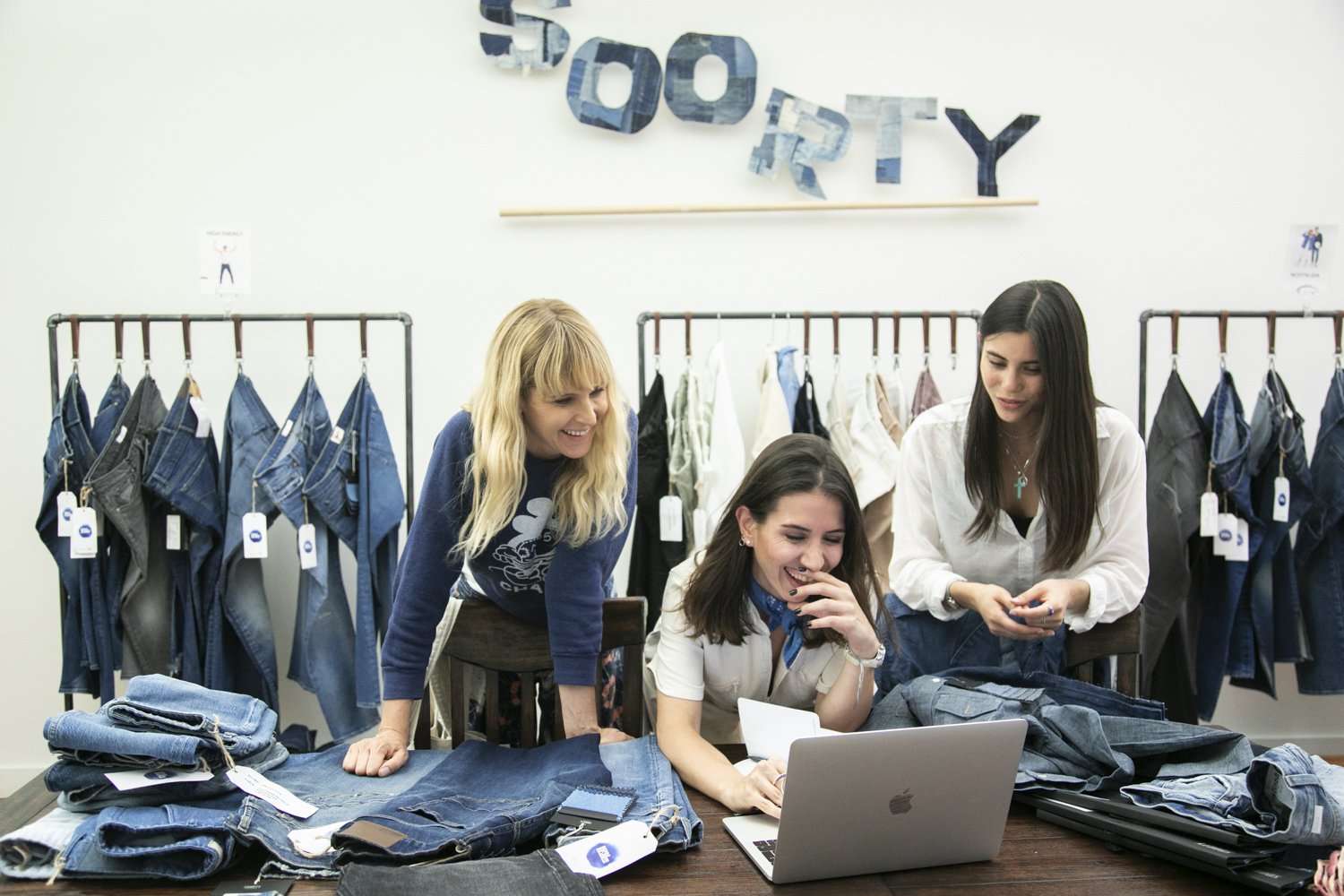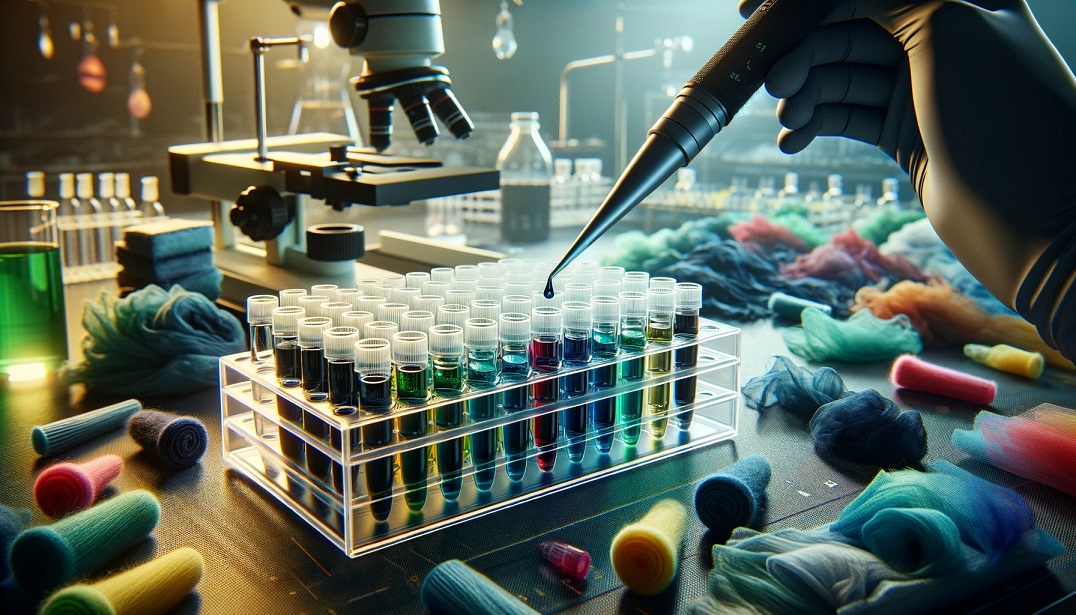Discover how Soorty, one of the leading denim companies in Pakistan, uses some amazing innovations for responsible denim manufacturing.
Denim is one of the most popular and versatile fabrics in the world, but it also has a significant environmental impact. From the cultivation of cotton to the dyeing and washing of denim fabric and garments, the denim industry consumes a lot of water, energy, and chemicals, and generates a lot of waste and pollution.
Soorty, one of Pakistan’s largest vertically integrated denim companies, is aware of these challenges and is committed to finding solutions that can make denim more sustainable and circular. With a vision to create “future possibilities” for denim lovers around the world, Soorty leverages its design expertise, technological capabilities, and responsible values to produce denim that is not only fashionable and functional, but also respectful of the planet and its people.
In this article, we will explore some of the innovative technologies that Soorty uses to make responsible denim that meets the highest standards of quality, performance, and aesthetics. [Due to proprietary nature, some of the technical details of the processes may not be fully disclosed.]
CASCARA: A Water-Saving Dyeing Process
CASCARA is a process that challenges the traditional way of making denim by initially dyeing the yarns and then washing them out to achieve the signature look. This saves an average of 28,815 gallons of water per day and simplifies the denim laundry.
The name CASCARA comes from the Spanish word for “husk” or “shell”, which refers to the outer layer of coffee beans that is usually discarded after roasting. Soorty uses this analogy to describe how they remove the excess dye from the denim yarns before weaving them into fabric.
The main steps of CASCARA are as follows:
- The cotton yarns are dyed with indigo or other colors in a continuous dyeing range.
- The dyed yarns are washed out in a special machine that uses water jets to remove the excess dye from the surface of the yarns. This creates a contrast between the core and the shell of the yarns, which gives denim its characteristic appearance.
- The washed out yarns are dried and wound onto beams for weaving.
- The woven fabric is finished with ozone or other eco-friendly treatments to enhance its properties and appearance.
- The finished fabric is ready for garment making and washing, which can be done with less water, energy and chemicals than conventional methods.
CASCARA is a technology that not only reduces water consumption and chemical pollution, but also creates authentic and natural-looking denim products.
COLOR THEORY: A Smart Over-Dyeing Process
COLOR THEORY is a smart and responsible over-dyeing process that uses ozone, which is a form of oxygen, to change the color of denim fabric. It uses 70% less water and steam compared to conventional over-dyeing processes while creating unique and authentic denim looks.
Ozone is a gas that has strong oxidizing properties. It can react with indigo dye on the surface of denim fabric, creating different shades of blue, green, brown, or black, depending on the amount and duration of ozone exposure.
The main steps of COLOR THEORY are as follows:
- The denim fabric is prepared for over-dyeing by removing any impurities or finishes that might interfere with the ozone treatment.
- The denim fabric is loaded into a special machine that generates ozone from the air and injects it into the dyeing chamber.
- The ozone reacts with the indigo dye on the surface of the denim fabric, creating different shades of color.
- The ozone-treated denim fabric is rinsed with water to remove any excess ozone and dye residues.
- The over-dyed denim fabric is dried and finished with other treatments such as laser or ozone to enhance its properties and appearance.
COLOR THEORY is a technology that not only saves water and energy consumption but also creates diverse and creative denim effects that complement the natural indigo shades.
DESIGN FOR PURPOSE: A Design Thinking Approach
DESIGN FOR PURPOSE is a design thinking approach that considers the life cycle of a product and allocates and utilizes resources efficiently. It aims to create goods that are designed for life and have minimal environmental impact.
Design for purpose is based on the idea that every product has a purpose, a function, and a value for the customer and the society. By understanding the needs, preferences, and expectations of the customers, as well as the environmental and social implications of the product, Soorty can design denim products that are relevant, useful, and responsible.
Some of the principles of design for purpose are:
- Choosing materials that are sustainable, durable, and recyclable.
- Using technologies that are efficient, effective, and eco-friendly.
- Creating products that are versatile, adaptable, and timeless.
- Offering products that are affordable, accessible, and inclusive.
- Providing products that are easy to care for, repair, and reuse.
Design for purpose is a way of thinking that not only improves the quality and performance of denim products but also reduces the waste and pollution generated by the denim industry.
ZERO WASTE WATER: A Water Recovery Technology
ZERO WASTE WATER is a technology that avoids the use of pre-washer and post-washer tanks, saving up to 90% of the waste water. It works with a continuous, regular flow of water system that is recovered and recirculated.
Water is one of the most precious and scarce resources in the world. The denim industry is one of the largest consumers of water, especially in the dyeing and washing processes. To address this issue, Soorty has developed a technology that minimizes water use and maximizes water recovery.
The main steps of ZERO WASTE WATER are as follows:
- The denim garments are loaded into an industrial washing machine that has a low liquor ratio (the ratio of water to fabric weight).
- The washing machine runs with a continuous, regular flow of water system that is injected to the machine through nozzles.
- The water used in the washing machine is recovered through a filtration system that removes any dirt or dye residues.
- The recovered water is recirculated back to the washing machine or stored in tanks for future use.
- The washing machine drains out only a small amount of water that cannot be recovered or reused.
ZERO WASTE WATER is a technology that not only saves water consumption but also reduces water pollution and improves effluent discharge quality.
FABRIC MERCERIZATION WITH OZONE: A Chemical-Free Fabric Treatment
FABRIC MERCERIZATION WITH OZONE is a process that replaces the use of many chemicals that are conventionally involved in fabric mercerization, which is a treatment that improves the strength, luster and dye affinity of cotton fabrics. It uses ozone, which is taken from the air and transformed inside a tumbler, to achieve the desired effects with lower environmental impact.
Mercerization is a process that involves treating cotton fabrics with a strong alkali solution, usually sodium hydroxide, under tension. This causes the cotton fibers to swell and become more round and smooth, resulting in increased strength, luster and dye uptake. However, this process also consumes a lot of water and chemicals, and generates hazardous waste water that needs to be treated.
The main steps of FABRIC MERCERIZATION WITH OZONE are as follows:
- The cotton fabric is prepared for mercerization by removing any impurities or finishes that might interfere with the ozone treatment.
- The cotton fabric is loaded into a tumbler machine that has an ozone generator and an exhaust system.
- The ozone generator produces ozone from the air and injects it into the tumbler chamber where it comes in contact with the fabric.
- The ozone reacts with the cellulose molecules of the fabric, causing them to swell and become more round and smooth, similar to the effect of alkali treatment.
- The ozone-treated fabric is rinsed with water to remove any excess ozone and then dried and finished with other treatments to enhance its properties and appearance.
FABRIC MERCERIZATION WITH OZONE is a technology that not only reduces water and chemical consumption but also improves the quality and performance of cotton fabrics.
RESPONSIBLE FABRIC FINISHING: A Water-Saving Fabric Shrinkage Control
RESPONSIBLE FABRIC FINISHING is a process that controls the shrinkage levels of the warp and weft of the fabric by using air circulation and minimal amounts of water or softener. It reduces the shrinkage levels after wash and makes garment production easier to handle.
Fabric shrinkage is a common problem in denim manufacturing, as it affects the fit, appearance and quality of denim garments. To prevent or reduce fabric shrinkage, conventional methods use a lot of water or softener to relax the fabric tension and stabilize its dimensions. However, this also consumes a lot of water and energy, and may affect the fabric characteristics.
The main steps of RESPONSIBLE FABRIC FINISHING are as follows:
- The denim fabric is prepared for finishing by removing any impurities or finishes that might interfere with the air treatment.
- The denim fabric is loaded into a special machine that has an air circulation system and a spray system.
- The air circulation system blows hot air onto the fabric surface, causing it to shrink slightly and uniformly in both warp and weft directions.
- The spray system applies a small amount of water or softener onto the fabric surface, depending on the desired shrinkage level and hand feel.
- The finished fabric is dried and ready for garment making and washing, which can be done with less water, energy and chemicals than conventional methods.
RESPONSIBLE FABRIC FINISHING is a technology that not only saves water and energy consumption but also improves the dimensional stability and quality of denim fabrics.
LOW LIQUOR WASHING: A Water-Saving Garment Washing Process
LOW LIQUOR WASHING is a process that reduces the amount of water required for garment washing and brings the liquor ratio down to very low levels. It works with a continuous, regular flow of water system that is injected to the machine, which is recovered and recirculated. It saves water, energy and time while increasing efficiency.
Garment washing is an important step in denim manufacturing, as it gives denim garments their final look, feel and performance. However, garment washing also consumes a lot of water, especially in conventional washing machines that have high liquor ratios (the ratio of water to garment weight). High liquor ratios mean more water is needed to dilute the chemicals and rinse the garments.
The main steps of LOW LIQUOR WASHING are as follows:
- The denim garments are loaded into an industrial washing machine that has a low liquor ratio (around 1:3 or less).
- The washing machine runs with a continuous, regular flow of water system that is injected to the machine through nozzles.
- The water used in the washing machine is recovered through a filtration system that removes any dirt or dye residues.
- The recovered water is recirculated back to the washing machine or stored in tanks for future use.
- The washing machine drains out only a small amount of water that cannot be recovered or reused.
LOW LIQUOR WASHING is a technology that not only saves water consumption but also reduces chemical use
NANO TECHNOLOGY APPLICATIONS: A Novel Way of Enhancing Fabric Properties
NANO TECHNOLOGY APPLICATIONS are the use of nanomaterials and nanodevices to improve the functionality, performance, and quality of fabrics. Nanotechnology is the manipulation of matter at the nanoscale (1-100 nanometers), which gives rise to novel physical, chemical, and biological properties that are different from those of the bulk materials.
Nanotechnology has been successfully applied in various fields such as medicine, agriculture, energy, and electronics. In the textile industry, nanotechnology offers many opportunities to create fabrics that are more durable, comfortable, protective, and smart. Some of the examples of nano technology applications in fabrics are:
- Nanofibers: Nanofibers are fibers with diameters less than 100 nanometers. They can be produced by various methods such as electrospinning, self-assembly, or template synthesis. Nanofibers have high surface area, porosity, and mechanical strength, which make them suitable for applications such as filtration, wound dressing, drug delivery, and tissue engineering. Nanofibers can also be incorporated into fabrics to enhance their properties such as breathability, moisture management, thermal insulation, and antibacterial activity.
- Nanocoatings: Nanocoatings are thin layers of nanomaterials that are applied to the surface of fabrics to modify their characteristics. Nanocoatings can be made of various nanomaterials such as metals, oxides, carbon, or polymers. Nanocoatings can impart various functions to fabrics such as water repellency, stain resistance, flame retardancy, UV protection, self-cleaning, and color changing.
- Nanoparticles: Nanoparticles are particles with sizes between 1 and 100 nanometers. They can be synthesized by various methods such as chemical precipitation, sol-gel, or hydrothermal. Nanoparticles can be used to improve the dyeing and finishing processes of fabrics by enhancing the color fastness, brightness, and uniformity. Nanoparticles can also be used to impart various functions to fabrics such as antimicrobial activity, odor control, thermal regulation, and electrical conductivity.
- Nanosensors: Nanosensors are devices that can detect and respond to physical, chemical, or biological stimuli at the nanoscale. They can be integrated into fabrics to create smart textiles that can monitor and communicate various parameters such as temperature, humidity, pressure, pH, or biochemicals. Nanosensors can also be used to create interactive textiles that can change color, shape, or texture in response to external stimuli.
NANO TECHNOLOGY APPLICATIONS are a novel way of enhancing fabric properties that can create new possibilities for textile innovation and sustainability.
SMARTCARE+: A Denim Collection with Hygiene and Protection Solutions
SMARTCARE+ is a denim collection that combines eco-advanced colors with hygiene and protection solutions. It is developed by Soorty in collaboration with Archroma, a global leader in specialty chemicals for the textile industry.
The main benefit of SMARTCARE+ is that it uses Archroma’s technologies to create denim fabrics that are sustainable, durable, comfortable and safe. The fabrics are dyed with aniline-free indigo and water-saving methods, and treated with antibacterial agents that keep the garments fresh, odor-free and germ-free. The fabrics are also suitable for making face masks that can help prevent the spread of COVID-19.
The main features of SMARTCARE+ are as follows:
- Pure Indigo Flow: An aniline-free indigo system that preserves the health of denim workers and aquatic life. It uses a pre-reduced liquid indigo solution that eliminates the need for sodium hydrosulfite, a hazardous reducing agent.
- Advanced Denim: A water-saving dyeing method based on sulfur-based Diresul RDT blue specialties. It allows a vast range of casts and wash-down effects while offering high flexibility and quality.
- Sanitized: An antibacterial treatment that keeps the garments feeling fresh, odor-free and germ-free. It works by inhibiting the growth of bacteria and fungi on the fabric surface, preventing unpleasant smells and infections.
- Smartrepel Hydro: A water-repellent finish that provides protection from water and oil-based stains. It is based on a biodegradable, non-PFC technology that is safe for the environment and the wearer.
SMARTCARE+ is a denim collection that not only offers fashionable and functional denim products but also promotes human health and well-being.
Conclusion
Soorty is one of Pakistan’s largest vertically integrated denim companies that is committed to creating “future possibilities” for denim lovers around the world. Soorty leverages its design expertise, technological capabilities, and responsible values to produce denim that is not only fashionable and functional, but also respectful of the planet and its people.
In this article, we have explored some of the innovative technologies that Soorty uses to make responsible denim that meets the highest standards of quality, performance, and aesthetics. These technologies include CASCARA, COLOR THEORY, DESIGN FOR PURPOSE, ZERO WASTE WATER, FABRIC MERCERIZATION WITH OZONE, RESPONSIBLE FABRIC FINISHING, LOW LIQUOR WASHING, NANO TECHNOLOGY APPLICATIONS, and SMARTCARE+.
By using these technologies, Soorty is able to reduce the environmental impact of denim manufacturing by saving water, energy and chemicals, and improving waste water quality. Soorty is also able to enhance the functionality and quality of denim products by offering various features such as durability, comfort, protection, and smartness. Soorty is also able to cater to the needs and preferences of the customers by offering a wide range of colors, effects, and styles.



